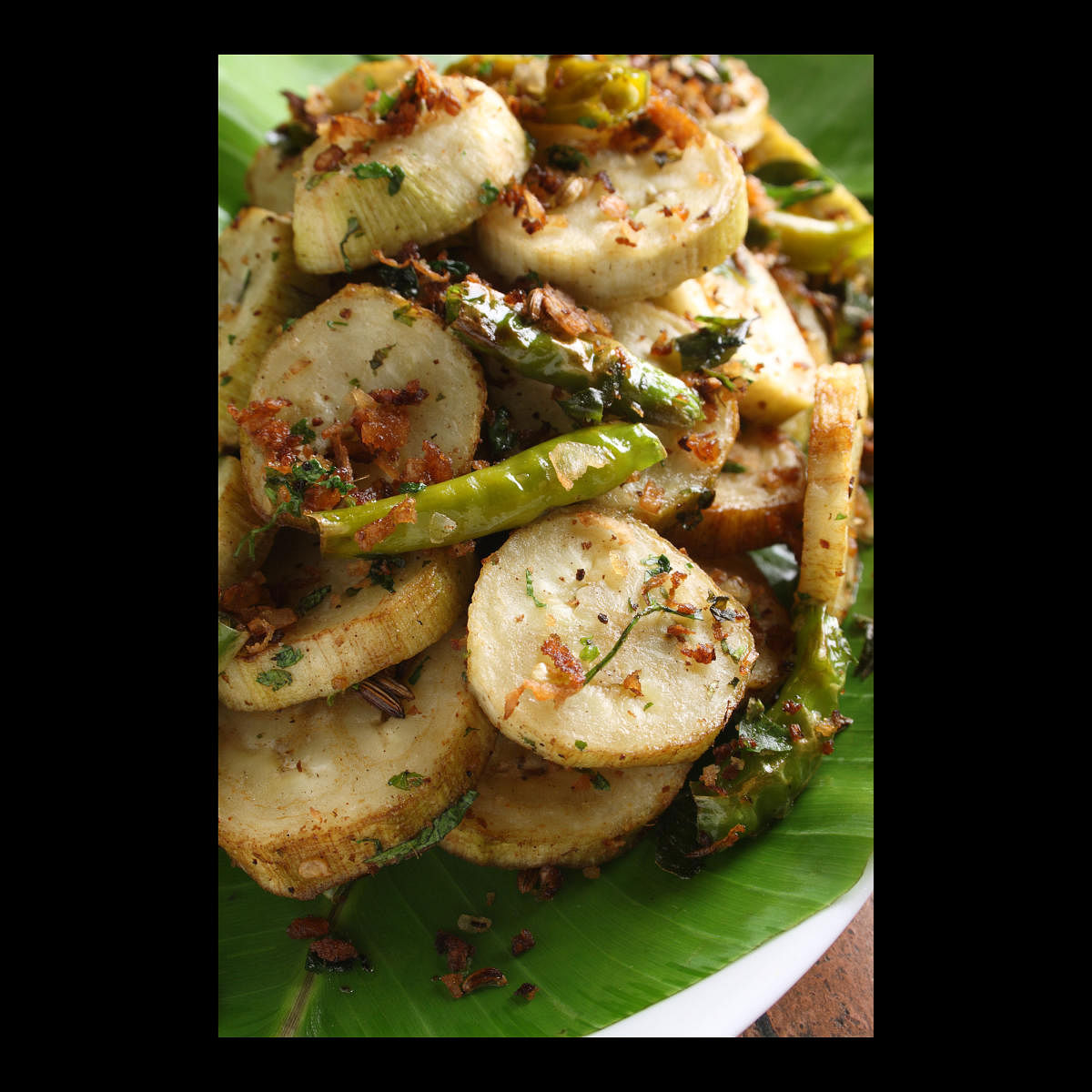

The culinary map of Karnataka is very interesting and exciting, thanks to its large geographical area and the diversity in its gastronomic styles. Having lived in Karnataka for almost two decades and travelled throughout the state to get to know the cuisine in depth and study the original regional cuisine in those varied social and cultural customs that are inseparable in parts of the regions, one could almost map the geographic and cultural diversity through these cuisines — dishes that are spicy and tangy, bland, as much as squishy or crispy.
Some dishes that started in the royal kitchens became signature dishes. The royal kitchens of Mysore had a culinary repertoire of wholesome delicacies like Kosambari, Puliyogare, Palyas, Gojju, Huli, Obbattu and many more but also the famous Mysore Pak which was invented accidentally by its royal chef Kakasura Madappa when he cooked gram flour, ghee and sugar together. Also, the ubiquitous Bisi Bele Bath, another popular palate pleaser, which again is claimed to have been crafted here first. As it sifted from the royal kitchens and became popular, it evolved to include vegetables and became a meal that farmers usually ate after working in the fields. The other two gourmet kings who set down the descriptions of food, cooking techniques and dining etiquettes, vegetarian and meat relishes are described by King Someshwara of Kalyana in Bidar in Manasollasa and also King Basavaraja of Keladi in Western Karnataka who started the practice of eating on a banana leaf in an organised manner. Mangaluru is a melting pot of cultures with its diverse communities like Tuluvas, Saraswat Brahmins, Gaud Brahmins, Catholics and Bunts, who bring in an eclectic blend of the culinary array. The repertoire is striking in all its flavour profiles — sweet, sour, salty, pungent, bitter, and astringent that combine in countless ways to create the incredible diversity of this cuisine. The fish curry with a tang of kokum, tamarind or raw mango, fermented cushiony sannas, neer dosas, Kori Gassi — wafer thin kori rotti, spongy Goli Baje, and Patrode, would lose its flavour if it was not steamed and stuffed in colocasia leaves. Kane or ladyfish quick fried, a variation of the hoppers called kappa roti which is served with mackerel fish curry — locally known as Bangude Ghassi. And a few miles away is Kundapur which is better known for its ghee-roast chicken, prawn mutton and also Kundapur Koli which is India’s best-served chilli chicken in my opinion.
Let’s go a few miles further to Udupi and find joy in an entirely different cuisine better known as Madhava cuisine which was based on the Vaishnav principles of the Krishna Mutt — to be managed and served by the Shivalli Brahmins. These masters of gastronomy or Pakashastra, the Shivalli Brahmins of Old Udupi created a clever melange of prasadam which became very popular, so soon it was recrafted commercially as vegetarian cuisine. I think this is what gave Udupi cuisine a significant edge. When it comes to the cuisine of Coorg, Pandi curry and bamboo shoot curry of the Highland Kodvas come to mind. The Kodavas prefer a cuisine around hunting and farming served with steamed rice Puttus and the expert use of Kachampuli, the concentrated vinegar from the kokum fruit. Some of my favourite indigenous specialities are the utterly butterly and delicious benne masala dosa at Davanagere, the mouth-melting milk Peda from Dharwad, Vijayapura’s Jolada Rotti Oota, the lip-smacking milk dessert Kunda from Belagavi, the famous Mandige candy from Bellary, the must-try Mirchi Bonda from Chitradurga, and Maddur Vada from Maddur which is a much-craved fritter. The list is exhaustive but that’s what makes Karnataka unique.
(The author is an award-winning chef, mentor, maven & master of food & beverage with over three decades of experience in leading world-class hotels & restaurants across the world.)